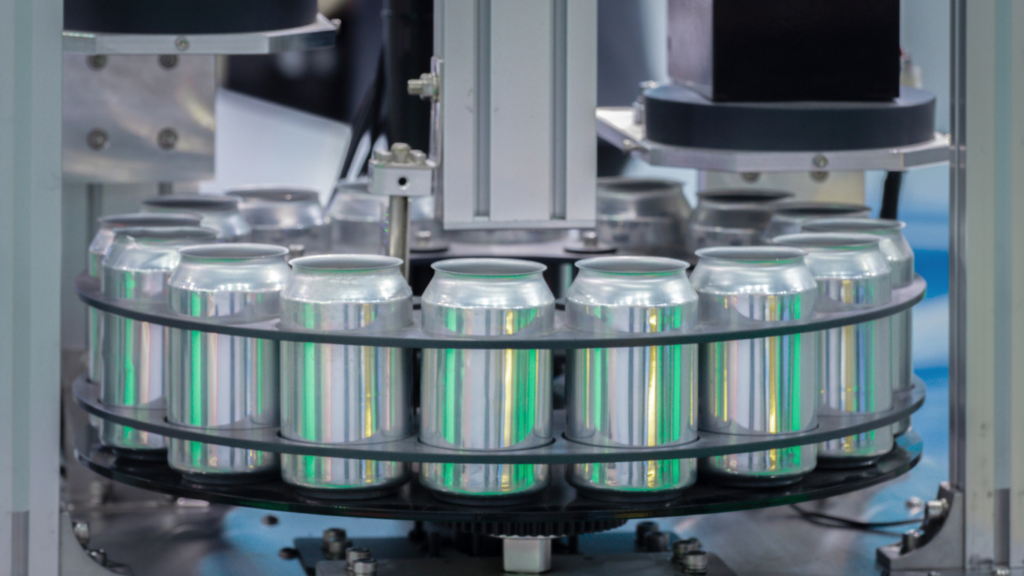The Food and Beverage industry is a crucial player in the global economy, providing nourishment and delight to people around the world. However, it’s also one of the largest contributors to water pollution due to its high water consumption and discharge of wastewater. To mitigate this environmental impact and contribute to the United Nations Sustainable Development Goals (SDGs), many food and beverage companies are now embracing Zero Liquid Discharge (ZLD) as a sustainable solution.
Zero Liquid Discharge (ZLD) in the Food and Beverage industry is an advanced wastewater treatment process designed to recover and reuse all water used in manufacturing, leaving no liquid discharge. It ensures compliance with stringent regulations, conserves resources, reduces operational costs, and supports sustainability. By efficiently managing water resources, ZLD helps the industry become more environmentally responsible and sustainable while aligning with global efforts to achieve clean water and responsible consumption and production.
The Importance of ZLD in Food and Beverage Industries :
- Water Scarcity Mitigation– Water scarcity is a global concern. The Food and Beverage industry, being a significant consumer of water, has a responsibility to minimize its water footprint. ZLD is an effective means of doing so.
- Observe Regulations– Stringent environmental regulations worldwide demand the responsible management of industrial wastewater. ZLD can help food and beverage companies meet these requirements and avoid penalties.
- Efficiency of Resources– ZLD enhances resource efficiency by recovering valuable materials, such as salts and minerals, from the wastewater. This reduces the cost of raw materials and waste disposal.
- Positive Brand Image: Consumers are increasingly conscious of a company’s environmental practices. Implementing ZLD with Scaleban can improve your company’s brand image and increase customer loyalty.
Are you prepared to explore ZLD solutions with Scaleban? Reach out to us now!
The Role of ScaleBan Industries in ZLD for Food and Beverage Industry –
Scaleban technology offers cost effective and sustainable ZLD solutions to the industry . We offer a transformative approach to water conservation and Zero Liquid Discharge objectives by eliminating the reliance on energy-intensive RO and MEE technologies, we significantly reduce energy consumption and CO2 emissions. This addresses the growing concern of environmental impact while providing cost-effective and efficient solutions to our clients.
We accomplish sustainable water conservation and Zero Liquid Discharge (ZLD) goals by reducing the use of freshwater in cooling towers. We ensure significant reductions in both capital expenditure (CAPEX) and operational expenditure (OPEX) for wastewater RO and MEE (Evaporator) systems.
We focus on completing the project within a 4-8 week timeframe resulting in a noteworthy decrease in carbon emissions, and maintaining a high Cycle of Concentration (COC) in cooling tower operations. Significantly lowering the volume of cooling tower blowdown. Our primary goal is a scale-free, corrosion-free, and biofouling-free operation throughout the entire cooling tower circuit, including all heat exchangers.
Are you prepared to explore ZLD solutions with Scaleban? Reach out to us now!
Aligning ZLD with SDG Goals
SDG Goal 6 – “Clean Water and Sanitation”
SDG 6 is dedicated to ensuring the accessibility and sustainable management of clean water and sanitation services for all. Many communities worldwide grapple with water scarcity, insufficient sanitation facilities, and water pollution. ZLD seeks to ensure the availability and sustainable management of clean water and adequate sanitation for all.
ZLD (Zero Liquid Discharge) solutions for food and beverage companies directly contribute to this goal by promoting responsible water use and reducing water pollution. By implementing ZLD, these companies minimize their impact on water resources and ensure that wastewater is treated to a high standard, protecting aquatic ecosystems and safeguarding access to clean water for communities.
SDG Goal 14 – “Life Below Water”
SDG 14 is primarily concerned with the conservation and sustainable use of oceans, seas, and marine resources. While this goal is not directly related to Zero Liquid Discharge (ZLD) solutions for food and beverage companies, there is an indirect connection.
ZLD systems help food and beverage companies minimize the pollution of water bodies by treating and reusing wastewater. This indirectly contributes to the protection of marine ecosystems and marine life.
By reusing water through ZLD, industries decrease their demand for freshwater sources, reducing the potential for over-extraction of water from rivers and aquifers, which can impact aquatic ecosystems.
Conclusion
The food and beverage industry’s adoption of zero liquid discharge is a big step toward sustainability and is consistent with the Sustainable Development Goals of the United Nations. Companies may successfully adopt ZLD systems, lower their water footprint, and contribute to a more sustainable future by collaborating with Scaleban technology . As consumer awareness of environmental issues continues to grow, embracing ZLD not only benefits the bottom line but also enhances a company’s reputation and contributes to a healthier planet. It’s a win-win solution that the industry should embrace wholeheartedly.
